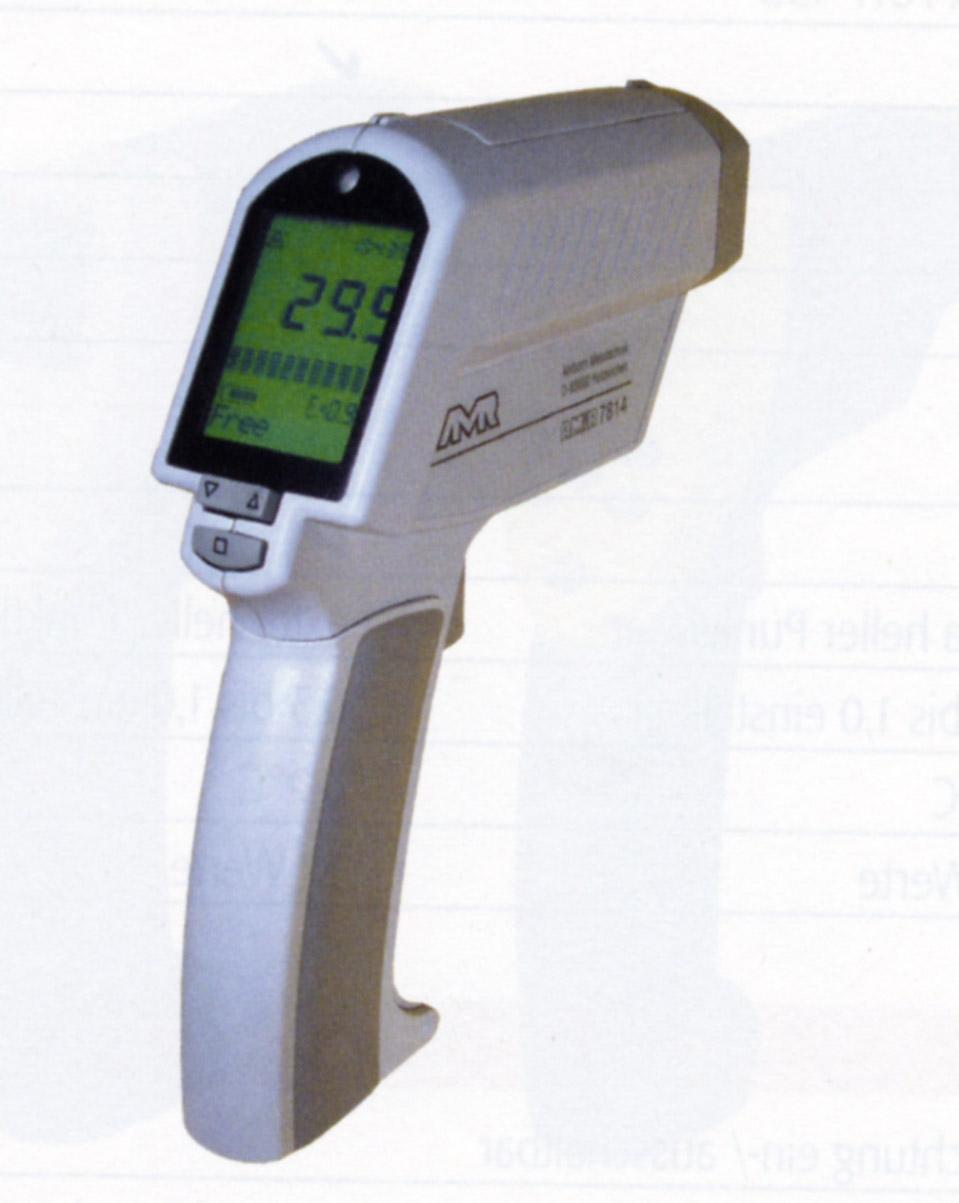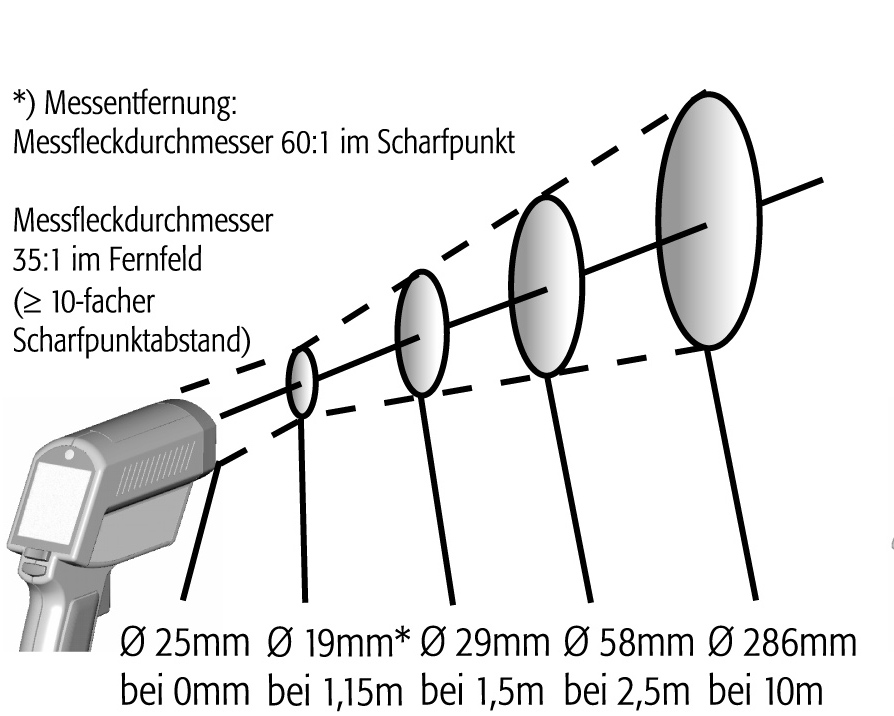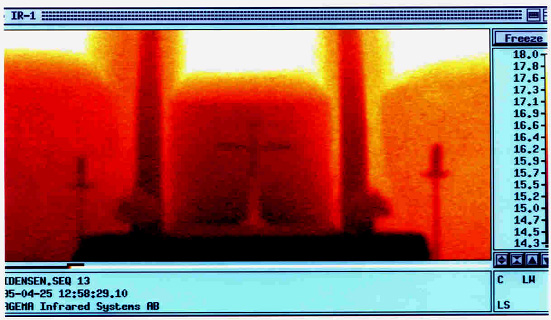Non-contact temperature measurement
Author: Hans-Jürgen Schwarz
English version by Sandra Leithäuser
back to Temperature Measurement
Abstract
When measuring the temperature of an object without touching it, the heat radiated from the object is used as the quantity to be measured.
Infrared thermometer
Infrared (IR) thermometers are a special method to measure surface temperature [1][Bernhard:2003]Title: Technische Temperaturmessung. Physikalische und meßtechnische Grundlagen, Sensoren und Meßverfahren, Meßfehler und Kalibrierung . The advantage of these devices is that they are non-contact meters and surface temperature can be measured without delay, i.e. the measurement process does not affect the object to be measured. [2]
. The advantage of these devices is that they are non-contact meters and surface temperature can be measured without delay, i.e. the measurement process does not affect the object to be measured. [2]
Basis: Thermal or infrared energy is light with a wavelength too large to be seen by the human eye. This energy is the portion of the electromagnetic spectrum, which we perceive as heat/warmth. Unlike visible light, in the world of infrared, every object radiates heat, if its temperature lies above absolute zero. Therefore even very cold objects, such as ice cubes emit infrared radiation. The higher the temperature of an object, the more intense the infrared radiation. It should be noted, that an IR- measuring device measures the emitted radiation. The radiation intensity of a body depends also on its surface structure and its colour, i.e. its emissivity[3]. The measured temperature value therefore needs to be corrected by including the value of the emittance factor. Even though tables with these values are available, the conditions on-site may be unsuitable for the exact determination of the emittance factors and a very accurate measurement may not be possible. Knowledge about the absolute temperature is not always necessary in every case and it does not need to be taken at every point. Knowing the temperature gradient is usually enough. This can be measured accurately, when based on a calibrated surface temperature, as described above. In practice, the person taking the measurement needs to take care to determine the emittance factor as closely as possible. Then the temperature gradient has to be measured, e.g. starting where the surface temperature has already been determined by the contact sensor. Now the IR-thermometer displays the temperature changes of the whole measuring area, provided the surfaces are all made from the same building material.
Some special devices make it possible to focus on a very narrow angle of measurement. Using these, the temperature on frescoed ceilings can be determined without a scaffold or ladder and without touching the fragile surfaces.
Infrared camera
The infrared camera is based on the same principles as the infrared thermometer. However, the camera makes a scan of a specific image area, using a cooled semiconductor detector. The individual measurement pixels are electronically converted into a picture. The infrared shows things that are otherwise not visible to the naked eye. Infrared cameras produce images of the invisible infrared or heat radiation and make precise non-contact temperature measurement possible.
| Thermography uses a camera to visualize the thermal energy radiated from an object. . |
Temperature can be displayed in different shades of gray or different colors. The infrared camera gives an overview of all parts of the building and, e.g. thermal bridges can easily be recognized.
WebLinks
- ↑ http://de.wikipedia.org/w/index.php?title=Pyrometer&oldid=76395760 gelesen 28.07.2010
- ↑ http://www.pewa.de/DATENBLATT/DBL_TESTO_INFRAROTMESSTECHNIK_FACHAUFSATZ_DEUTSCH.pdf gelesen 29.07.2010
- ↑ http://en.wikipedia.org/wiki/Emissivity read 26.11.2012
Literatur
| [Bernhard:2003] | Bernhard, Frank (eds.) (2003): Technische Temperaturmessung. Physikalische und meßtechnische Grundlagen, Sensoren und Meßverfahren, Meßfehler und Kalibrierung, Springer, Berlin |  |


